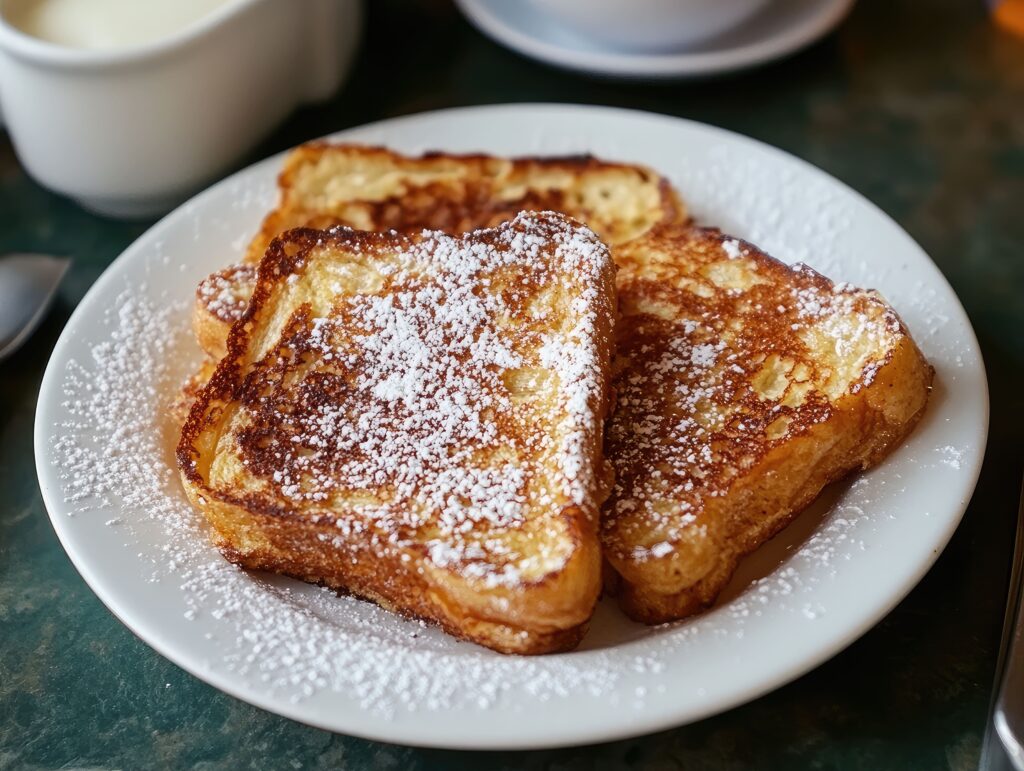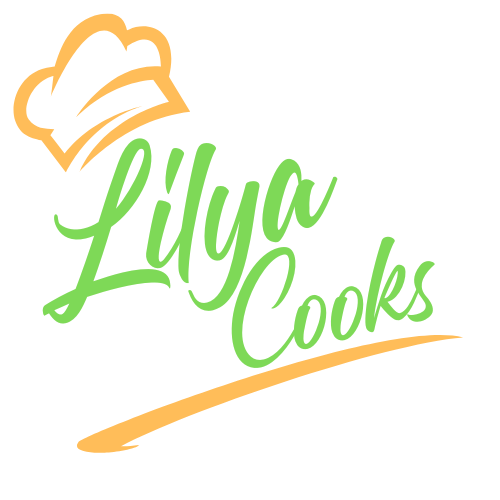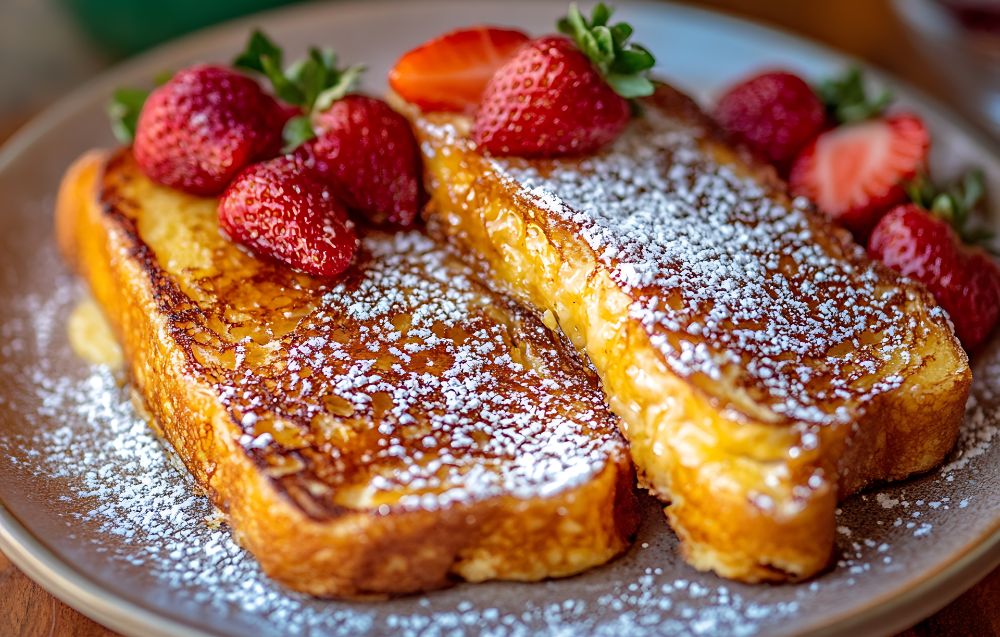If you’ve ever woken up craving a plate of warm, golden French toast, you know how satisfying it can be. But here’s the thing: not all French toast is created equal, and the bread you choose plays a huge role in determining whether it’s a showstopper or a soggy mess. So, what kind of bread is best for French toast? Let’s dive into everything you need to know to make your French toast unforgettable.
Introduction to French Toast and Its Bread Selection
Why Bread Choice Matters in French Toast
Let’s face it: bread is the foundation of French toast. While the eggs, milk, and toppings bring the flavor, the bread holds it all together. Picking the wrong type of bread can lead to frustrating problems—like slices that fall apart in the pan or don’t soak up enough custard. The right bread? It soaks up the mixture like a sponge and delivers that perfectly crisp exterior with a soft, melt-in-your-mouth center.
Think of bread as the canvas for your French toast masterpiece. It has to be sturdy enough to handle the batter but tender enough to create that rich, indulgent texture we all love.
If you want to explore creative options, consider Hawaiian roll French toast for a sweet, fluffy twist. These rolls have a slight sweetness that elevates every bite.
The Role of Texture and Flavor in French Toast Bread
Texture and flavor are the dynamic duo when it comes to picking the best bread. You’re looking for bread with:
- A slight density to soak up the custard without disintegrating.
- A subtle sweetness or neutral flavor to complement, not overpower, your toppings.
For example, a crusty sourdough will give you a chewy, rustic vibe, while brioche offers a buttery, cake-like sweetness.
“The best French toast starts with bread that can handle the soak and still hold its own.”
Want a tangy twist? Check out Easy Protein Granola to bring a rustic feel to your breakfast table.

Classic Bread Options for French Toast
Brioche: The Luxurious Choice
Brioche is often the crown jewel of French toast recipes. Why? Because it’s rich, buttery, and slightly sweet—basically tailor-made for soaking up custard. Its tender crumb creates a fluffy center, while the buttery notes pair beautifully with maple syrup, fresh fruits, or powdered sugar.
If you’re going for brunch vibes or want to impress guests, brioche is the way to go. Sure, it’s a little pricier than your average loaf, but trust me, it’s worth every penny.
Challah: A Sweet and Dense Favorite
Challah is another top contender, especially if you’re looking for a bread that’s slightly denser than brioche. Its rich, eggy texture makes it an excellent choice for French toast. Plus, challah’s braided design creates beautiful slices that look as good as they taste.
One pro tip? Let your challah sit out overnight to get slightly stale—it’ll soak up the custard even better!
White Sandwich Bread: A Budget-Friendly Staple
Now, let’s talk basics. White sandwich bread might not be as glamorous as brioche or challah, but it’s affordable, accessible, and gets the job done. It’s soft and neutral, so it pairs well with any topping you throw at it.
If you’re using white bread, just make sure to slice it a little thicker than usual to prevent it from falling apart. While it may not have the wow factor of artisan bread, it’s a solid choice for those quick, no-fuss mornings.
Unique and Creative Bread Choices for French Toast
Sourdough: Tangy and Chewy Delight
Looking for a French toast with a little personality? Enter sourdough. Its tangy flavor and chewy texture add a unique twist to the classic dish. Sourdough’s sturdy structure makes it ideal for soaking up custard without losing its shape.
For more creative ideas with sourdough, check out sourdough French toast: Your new morning obsession. It’s a must-try for anyone who loves a balance of rustic and refined flavors.
Cinnamon Swirl Bread: Adding Built-In Flavor
Why not add a little spice to your French toast? Cinnamon swirl bread comes pre-loaded with warm, comforting flavors, meaning less work for you in the kitchen.
With its sugary ribbons of cinnamon, this bread is practically begging to be turned into French toast. A light dusting of powdered sugar or a dollop of whipped cream is all you need to make this a showstopper.
Croissants: Decadent and Buttery Variation
If you’re feeling fancy (and why not?), croissants can take your French toast game to the next level. Their buttery, flaky layers create a texture that’s unlike anything else.
Since croissants are already rich, they don’t need much in terms of toppings. A sprinkle of powdered sugar or a light drizzle of caramel sauce is enough to make them shine.
Gluten-Free Options: Inclusive French Toast Ideas
If you or someone you’re cooking for avoids gluten, you don’t have to miss out on French toast. Gluten-free breads have come a long way in terms of texture and flavor. To explore some great options, check out The key to gluten-free baking: Your ultimate how-to guide.
“Great French toast is for everyone, regardless of dietary restrictions!”
Artisan Breads: For a Gourmet Experience
If you’re after a more refined experience, consider artisan breads like Italian loaves or crusty French boules. These breads add a rustic touch and pair wonderfully with toppings like fresh berries or flavored syrups. Learn more about choosing artisan breads in Artisan Italian bread: Your gateway to authentic baking.
Common Problems When Choosing Bread for French Toast
Bread Falling Apart: Causes and Solutions
One of the most frustrating issues with French toast is when your bread turns to mush or falls apart during cooking. This usually happens when the bread is too soft or thin to hold up under the custard soak. White sandwich bread, for instance, can be too flimsy if it’s sliced too thin or overly fresh.
Solution? Opt for bread with a denser structure, like brioche or sourdough. If you’re working with soft bread, slice it thicker than usual—about 1-inch slices work best. Letting your bread sit out for a day or two to get slightly stale is another simple trick to improve its durability.
Bread Too Dry or Too Soggy: Fixing the Balance
Another common issue is finding the right balance between too dry and too soggy. Bread that doesn’t absorb enough custard remains dry inside, while bread that absorbs too much can become a soggy mess.
The key is in the custard-to-bread ratio. The custard should fully coat the bread but not completely saturate it. If your bread feels too wet before hitting the skillet, let it sit for a few seconds on a cooling rack to drain excess custard. On the other hand, if your bread seems resistant to soaking, extend the soak time slightly, especially for thicker, sturdier bread like artisan loaves.
For help mastering the perfect custard, see tips for making the perfect custard base.
Characteristics of the Perfect Bread for French Toast
Thickness of Bread Slices
The thickness of your bread slices plays a significant role in creating the perfect French toast. Thicker slices, around 1 to 1.5 inches, allow the custard to penetrate just enough without turning the bread into a soggy mess. Brioche and challah, with their soft crumb and sturdy structure, are particularly suited to thicker cuts.
“Think of bread slices like sponges: they need to hold enough moisture without overflowing.”
If you’re unsure which thickness works best, err on the side of slightly thicker slices and adjust your cooking time to ensure a crispy exterior.
Absorption Capability for Custard Mixture
Not all bread is equally absorbent. Brioche and challah are excellent for their sponge-like ability to soak up custard while remaining structurally sound.
Balancing Softness and Structure
The ideal bread strikes a balance between softness and structure. Too soft, and it disintegrates. Too dense, and it doesn’t absorb enough custard. Artisan breads like sourdough or Italian loaves offer the perfect medium: soft interiors with sturdy crusts.
Tips for Preparing Bread for French Toast
Stale vs. Fresh Bread: Which Works Better?
Fresh bread might seem like the obvious choice, but slightly stale bread actually works better for French toast. Why? The drying process creates a firmer texture, making it easier for the bread to absorb custard without turning to mush. If your bread is too fresh, try lightly toasting it or leaving it out overnight to dry.
Want to know more about bread textures and why they matter? Check out understanding the basics of bread types for a deeper dive.
Pre-Slicing and Storing Bread for Optimal Results
If you’re planning ahead, pre-slice your bread to your desired thickness and store it in a paper bag. The bag will allow the bread to lose some moisture while preventing it from going completely stale. This prep step ensures you always have bread that’s French-toast-ready.
The Best Bread Choices for Dietary Needs
Gluten-Free Breads for French Toast
For those avoiding gluten, don’t worry—French toast isn’t off the table! Gluten-free breads have improved significantly in texture and flavor. Look for varieties that mimic the density of brioche or sourdough for the best results.
Vegan-Friendly Bread Alternatives
If you’re going vegan, you’ll need a custard substitute in addition to vegan bread. Coconut milk, almond milk, and flaxseed meal are excellent replacements for traditional custard ingredients. Pair these with vegan bread options that are slightly dense and sturdy to hold up during cooking.
Enhancing Your French Toast with the Right Bread
Pairing Toppings with Your Bread Choice
The bread you choose should complement your toppings. For example, sourdough pairs beautifully with savory toppings like avocado and eggs, while cinnamon swirl bread shines with sweeter additions like caramelized bananas and whipped cream.
Need inspiration? Check out creative French toast topping ideas for combinations that will take your breakfast to the next level.
Infusing Bread with Flavored Syrups or Custards
Want to elevate your French toast even further? Try infusing your custard with spices like cinnamon, nutmeg, or even a splash of vanilla extract. You can also drizzle flavored syrups—like maple, honey, or fruit reductions—on artisan bread for a gourmet twist.
The Best Bread Choices for Dietary Needs
Low-Carb Options: Is It Possible?
When it comes to French toast, bread is the star, but what if you’re watching your carb intake? Low-carb bread options have come a long way, offering alternatives that are surprisingly good for French toast. Look for bread made with almond flour, coconut flour, or even cauliflower-based options. These tend to be denser, which works in their favor when soaking up custard.
For the best results, slice low-carb bread slightly thinner than traditional bread to ensure even cooking. Since these breads don’t always have the same natural sweetness as brioche or challah, consider adding a hint of vanilla or cinnamon to your custard to enhance the flavor.
Vegan-Friendly Bread Alternatives
Vegan French toast is absolutely doable, and it starts with the bread. Many store-bought bread options are already vegan, but double-check the label to ensure there’s no added dairy or eggs. Whole-grain or sourdough breads are great picks for their dense texture and earthy flavor.
To make vegan French toast, replace the eggs in your custard with alternatives like mashed bananas, silken tofu, or a flaxseed and water mixture. Almond or oat milk makes a creamy substitute for dairy milk. Pairing these with a hearty bread results in a dish that’s both satisfying and completely plant-based.
Elevating Your French Toast Game
Cooking Techniques for the Perfect French Toast
The way you cook your French toast can make or break the dish. Start by preheating your skillet or griddle to medium heat and using a small amount of butter or oil to coat the surface. A well-heated pan ensures that the outside of the bread gets golden and crispy while the inside remains soft and custardy.
Flip your slices only once, allowing each side to cook for 2-3 minutes. Press lightly with your spatula to check for firmness—this is a sign that the custard has cooked through.
Experimenting with Flavors in Your Custard
While the classic egg and milk mixture is a staple, why stop there? You can infuse your custard with a variety of flavors to suit your mood or the occasion. Add spices like cinnamon, nutmeg, or cardamom for warmth, or stir in extracts like vanilla, almond, or even orange for a citrusy twist.
Want to take it a step further? Consider adding a splash of coffee, cocoa powder, or even a shot of espresso to your custard for a bold, unique flavor profile. These small tweaks can transform a basic recipe into something extraordinary.
Toppings That Take It to the Next Level
Toppings are the finishing touch that can elevate French toast from delicious to unforgettable. Traditional choices like maple syrup and powdered sugar are classics for a reason, but there’s a world of creative options to explore.
Fresh fruits like berries, bananas, or peaches bring natural sweetness and a pop of color. For a more decadent treat, top your French toast with whipped cream, cream cheese, or mascarpone. And if you’re feeling indulgent, drizzle caramel, chocolate, or a homemade fruit compote over the top.
For a savory twist, try adding a dollop of ricotta cheese and a drizzle of honey or a fried egg and avocado. The possibilities are endless!
Troubleshooting Common French Toast Issues
Why Is My French Toast Sticking to the Pan?
If your French toast sticks to the pan, it’s likely due to insufficient greasing or cooking at the wrong temperature. Always preheat your skillet and use enough butter or oil to create a non-stick surface. If the pan is too hot, the butter may burn, causing the bread to stick. Conversely, if the pan isn’t hot enough, the bread can become soggy and stick when flipped.
Keep your heat on medium and adjust as needed to find that sweet spot.
Why Does My French Toast Taste Bland?
Bland French toast is a common complaint, and it usually comes down to the custard. Don’t skimp on flavoring your batter! Adding sugar, spices, and extracts ensures that every bite is rich and flavorful. Using a well-flavored bread like brioche or cinnamon swirl can also help enhance the overall taste.
How Do I Keep French Toast Warm Before Serving?
If you’re cooking for a crowd, keeping your French toast warm while you finish the batch can be tricky. Place cooked slices on a baking sheet in a preheated oven at 200°F (93°C). This keeps them warm without overcooking or drying them out. For even better results, cover the tray with foil to lock in moisture.
Creative Ways to Serve French Toast
French Toast Casserole for a Crowd
Want to skip the stovetop hassle? Turn your French toast into a casserole. Layer slices of bread in a baking dish, pour your custard over the top, and let it soak overnight in the fridge. The next morning, bake it until golden and serve with your favorite toppings. It’s perfect for brunch or special occasions.
Stuffed French Toast for an Indulgent Twist
For a truly indulgent experience, try stuffed French toast. Use thick slices of bread, cut a pocket into the side, and fill it with cream cheese, Nutella, or fruit preserves before dipping it in custard. Cook as usual, and you’ll have a decadent treat that’s sure to impress.
Mini French Toast Sticks for Kids
If you’re cooking for kids—or just want a fun finger food—try making mini French toast sticks. Slice your bread into strips before dipping it in custard, then cook until crispy. Serve with small bowls of syrup, chocolate sauce, or fruit for dipping. It’s a playful take on a classic dish that everyone will love.
Conclusion: Bread as the Hero of French Toast
At the end of the day, the best French toast starts with the right bread. Whether you prefer the buttery richness of brioche, the tang of sourdough, or the simplicity of sandwich bread, the key is finding a balance between flavor, texture, and your personal preferences. Don’t be afraid to experiment with unique breads, creative toppings, or different cooking techniques to make your French toast truly your own.
So go ahead, grab your favorite loaf, and start cooking. Your perfect plate of French toast is waiting!

